Rebecca's Revival: Creating Black Christianity in the Atlantic World is a biography written by Jon F. Sensbach, a professor of history at the University of Florida. It follows the life of Rebecca Protten a slave and then freed woman of mixed white and African descent, who, while living on the island of St. Thomas during the 1730s, became part of the movement to convert slaves to Christianity. Sensbach attempts to show how the rise of the 'Black Church' was in part a result of Rebecca's early evangelical efforts at slave conversion.

The Second Great Awakening was a Protestant religious revival during the early 19th century in the United States. It spread religion through revivals and emotional preaching and sparked a number of reform movements. Revivals were a key part of the movement and attracted hundreds of converts to new Protestant denominations. The Methodist Church used circuit riders to reach people in frontier locations.

The Atlantic slave trade or transatlantic slave trade involved the transportation by slave traders of enslaved African people, mainly to the Americas. The outfitted European slave ships of the slave trade regularly used the triangular trade route and its Middle Passage, and existed from the 16th to the 19th centuries. The vast majority of those who were transported in the transatlantic slave trade were from Central and West Africa who had been sold by West African slave traders mainly to Portuguese, British, Spanish, Dutch, and French slave traders, while others had been captured directly by the slave traders in coastal raids; European slave traders gathered and imprisoned the enslaved at forts on the African coast and then brought them to the Americas. Except for the Portuguese, European slave traders generally did not participate in the raids because life expectancy for Europeans in sub-Saharan Africa was less than one year during the period of the slave trade.

During the Age of Discovery, a large scale colonization of the Americas, involving a number of European countries, took place primarily between the late 15th century and the early 19th century. The Norse had explored and colonized areas of Europe and the North Atlantic, colonizing Greenland and creating a short term settlement near the northern tip of Newfoundland circa 1000 AD. However, due to its long duration and importance, the later colonization by the European powers involving the continents of North America and South America is arguably more well-known.
Spirituals is a genre of Christian music that is associated with African Americans, which merged sub-Saharan African cultural heritage with the experiences of being held in bondage in slavery, at first during the transatlantic slave trade and for centuries afterwards, through the domestic slave trade. Spirituals encompass the "sing songs," work songs, and plantation songs that evolved into the blues and gospel songs in church. In the nineteenth century, the word "spirituals" referred to all these subcategories of folk songs. While they were often rooted in biblical stories, they also described the extreme hardships endured by African Americans who were enslaved from the 17th century until the 1860s, the emancipation altering mainly the nature of slavery for many. Many new derivative music genres emerged from the spirituals songcraft.

Hoodoo is a set of spiritual practices, traditions, and beliefs that were created by enslaved African Americans in the Southern United States from various traditional African spiritualities, Christianity and elements of indigenous botanical knowledge. Practitioners of Hoodoo are called rootworkers, conjure doctors, conjure man or conjure woman, and root doctors. Regional synonyms for Hoodoo include rootwork and conjure. As a syncretic spiritual system, it also incorporates beliefs from Islam brought over by enslaved West African Muslims, and Spiritualism. Scholars define Hoodoo as a folk religion. It is a syncretic religion between two or more cultural religions, in this case being African indigenous spirituality and Abrahamic religion.
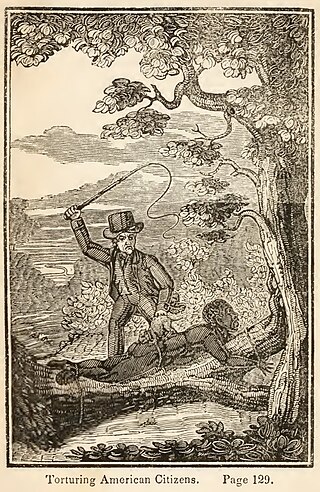
The legal institution of human chattel slavery, comprising the enslavement primarily of Africans and African Americans, was prevalent in the United States of America from its founding in 1776 until 1865, predominantly in the South. Slavery was established throughout European colonization in the Americas. From 1526, during the early colonial period, it was practiced in what became Britain's colonies, including the Thirteen Colonies that formed the United States. Under the law, an enslaved person was treated as property that could be bought, sold, or given away. Slavery lasted in about half of U.S. states until abolition in 1865, and issues concerning slavery seeped into every aspect of national politics, economics, and social custom. In the decades after the end of Reconstruction in 1877, many of slavery's economic and social functions were continued through segregation, sharecropping, and convict leasing.

Rebecca Ann Felton was an American writer, politician, activist, and slave owner who was the first woman to serve in the United States Senate, serving for only one day. She was a prominent member of the Georgia upper class who advocated for prison reform, women's suffrage and education reform. Her husband, William Harrell Felton, served in both the United States House of Representatives and the Georgia House of Representatives, and she helped organize his political campaigns. Historian Numan Bartley wrote that by 1915 Felton "was championing a lengthy feminist program that ranged from prohibition to equal pay for equal work yet never accomplished any feat because she held her role because of her husband."
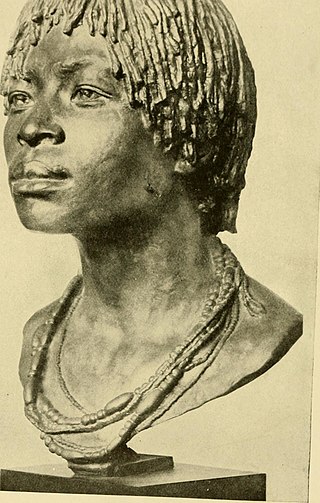
The Kongo people are a Bantu ethnic group primarily defined as the speakers of Kikongo. Subgroups include the Beembe, Bwende, Vili, Sundi, Yombe, Dondo, Lari, and others.
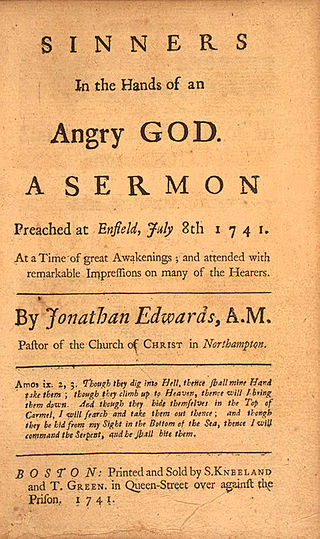
The First Great Awakening or the Evangelical Revival was a series of Christian revivals that swept Britain and its thirteen North American colonies in the 1730s and 1740s. The revival movement permanently affected Protestantism as adherents strove to renew individual piety and religious devotion. The Great Awakening marked the emergence of Anglo-American evangelicalism as a trans-denominational movement within the Protestant churches. In the United States, the term Great Awakening is most often used, while in the United Kingdom, the movement is referred to as the Evangelical Revival.

Slavery in the Spanish American colonies was an economic and social institution which existed throughout the Spanish Empire including Spain itself. Indigenous peoples were enslaved and their populations decimated. Subsequently enslaved Africans were brought over. Native people were also subjected to forced conversions and conscription.
During antebellum America, a hush harbor was a place where enslaved African Americans would gather in secret to practice religious traditions.
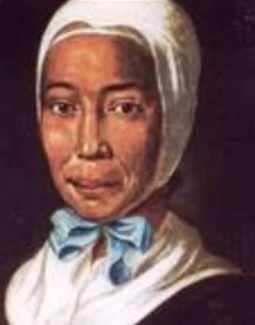
Rebecca Freundlich Protten, also Shelly (1718–1780) was a Caribbean Moravian evangelist and pioneer missionary who propagated the Gospel to slaves on the island of Saint Thomas, US Virgin Islands. A "mulatress" and a former slave in Antigua, Antigua and Barbuda, she pioneered Christian missions in the Atlantic World in the 1700s. Scholars have described her as the "Mother of Modern Missions" as her life's work bridged Christianity in the West Indies, in Europe and in West Africa, all geographic regions she lived in.
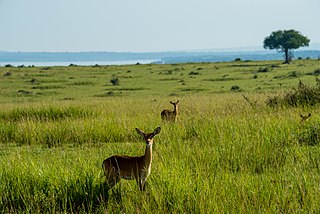
The Sudanian savanna or Sudan region is a broad belt of tropical savanna that runs east and west across the African continent, from the Ethiopian Highlands in the east to the Atlantic Ocean in the west. It represents the central bioregion within the broader tropical savanna biome of the Afrotropical realm. The Sahel acacia savanna, a belt of drier grasslands, lies to the north, forming a transition zone between the Sudanian savanna and the Sahara Desert phytochorion. To the Sudan's south, the more humid forest-savanna mosaic forms a transition zone between the Sudanian savanna and the Guineo-Congolian forests that lie nearer the equator.

Religion of black Americans refers to the religious and spiritual practices of African Americans. Historians generally agree that the religious life of black Americans "forms the foundation of their community life". Before 1775 there was scattered evidence of organized religion among black people in the Thirteen Colonies. The Methodist and Baptist churches became much more active in the 1780s. Their growth was quite rapid for the next 150 years, until their membership included the majority of black Americans.

Protestantism is the dominant religion in Jamaica. Protestants make up about 65% percent of the population. The five largest denominations in Jamaica are: Church of God, Seventh-day Adventist, Baptist, Pentecostal and Anglican. The full list is below. Most of the Caribbean is Catholic; Jamaica's Protestantism is a legacy of missionaries that came to the island in the 18th and 19th centuries. Missionaries attempted to convert slaves to varying Protestant denominations of Moravians, Baptists, Methodists, and Presbyterians to name a few. As missionaries worked to convert slaves, African traditions mixed with the religion brought over by Europeans. Protestantism was associated with black nationalism in Jamaica, aiming to improve the lives of blacks who were governed by a white minority during colonial times. Today, Protestantism plays an important role in society by providing services to people in need.

Invisible churches among enslaved African Americans in the United States were informal Christian groups where enslaved people listened to preachers that they chose without their slaveholder's knowledge. The Invisible churches taught a different message from white-controlled churches and did not emphasize obedience to slave masters. Some slaves could not contact invisible churches and others did not agree with an invisible church's message but many slaves were comforted by the invisible churches.

Slavery in Spain can be traced to the Phoenician and Roman eras. In the 9th century the Muslim Moorish rulers and local Jewish merchants traded in Spanish and Eastern European Christian slaves. Spain began to trade slaves in the 15th century and this trade reached its peak in the 16th century. The history of Spanish enslavement of Africans began with Portuguese captains Antão Gonçalves and Nuno Tristão in 1441. The first large group of African slaves, made up of 235 slaves, came with Lançarote de Freitas three years later. In 1462, Portuguese slave traders began to operate in Seville, Spain. During the 1470s, Spanish merchants began to trade large numbers of slaves. Slaves were auctioned at market at a cathedral, and subsequently were transported to cities all over Imperial Spain. This led to the spread of Moorish, African, and Christian slavery in Spain. By the 16th century, 7.4 percent of the population in Seville, Spain were slaves. Many historians have concluded that Renaissance and early-modern Spain had the highest amount of African slaves in Europe.
Hans Werner Debrunner was a Swiss German historian and theologian whose work mainly covered mission history, West Africa and the African diaspora. He also carried out academic research on history relating to missiology in northern, eastern and southern Africa. Upon his death in 1998, his private library and archive were donated to the Carl Schlettwein Foundation. The "independent, self-contained collection" comprises more than 3100 books and single journal issues on his area of specialty, published mostly in the first half to mid-twentieth century. Furthermore, Debrunner’s academic archives are a compilation of historiography and ethnography, particularly bio-bibliographies of Swiss missionaries and native African pastors and missionaries who worked with the Basel Mission in Africa. Debrunner also documented history, socio-political and intercultural relations between Africa and Europe. Hans Debrunner’s accounts explored the life and works of African saints, royalty, aristocrats, noblemen, political envoys, writers, intellectuals, scholars and artists who lived in or visited Europe from the early medieval period through the Enlightenment until the end of the World War I era.
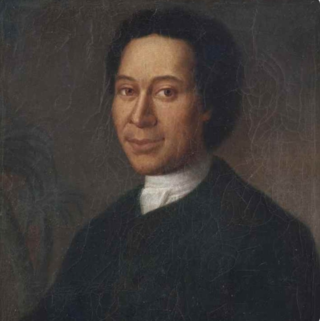
Christian Jacob Protten also Christian Jakobus Africanus Protten or Uldrich was a Euro-African Moravian missionary pioneer, linguist, translator and educationalist-administrator in Christiansborg on the Danish Gold Coast in the eighteenth century. The first recorded grammatical treatise in the Ga and Fante languages was written by Protten and published in Copenhagen in 1764.
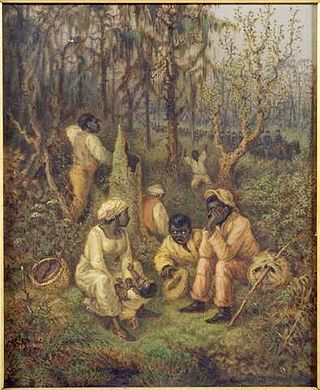
The Chesapeake rebellion of 1730 was the largest slave rebellion of the colonial period in North America. Believing that Virginian planters had disregarded a royal edict from King George II which freed slaves, two hundred slaves gathered in Princess Anne County, Virginia, in October, electing captains and demanding that Governor Gooch honor the royal edict. White planters stopped these meetings, arresting some slaves and forcing others to flee. Although hundreds of slaves fled to the Great Dismal Swamp, they were immediately hunted down by the authorities and their Pasquotank allies.